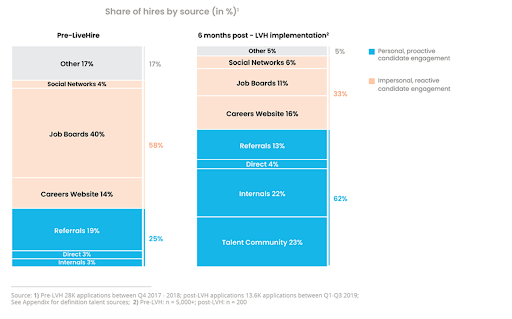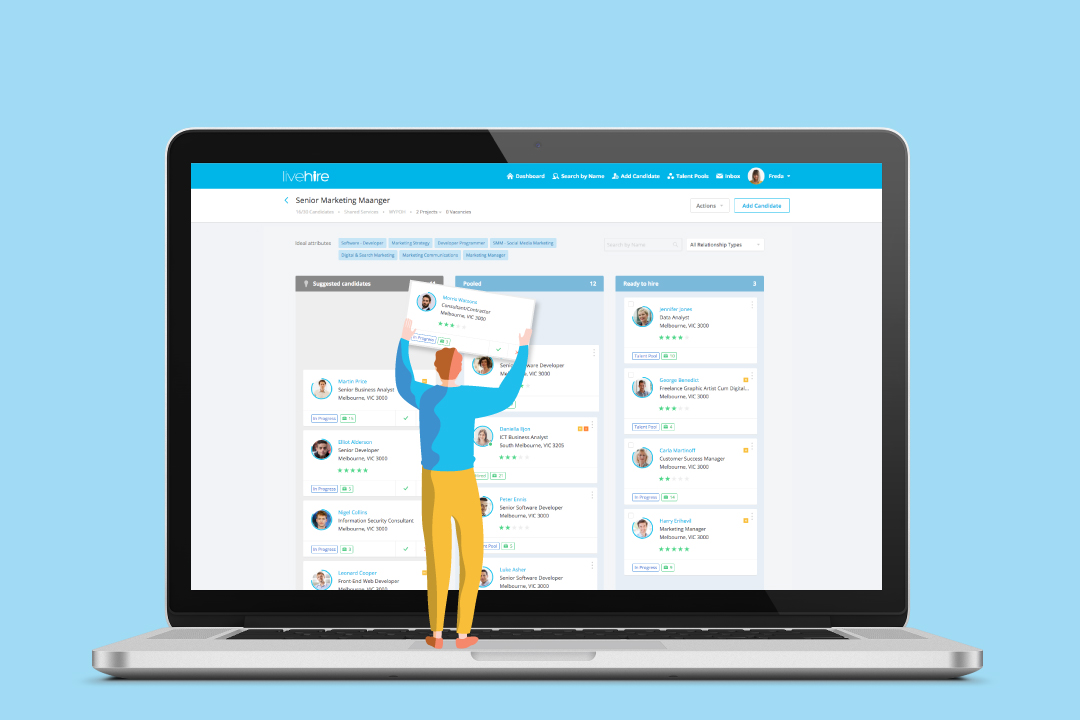
Introduction
In today’s fast-paced and highly competitive business landscape, organizations are constantly seeking innovative ways to secure their position in the market. One of the most valuable assets that companies possess is their workforce, and to remain agile and successful, it is essential to harness the potential of this talent. Enter the concept of internal talent pooling – a strategic practice that not only enhances employee growth and satisfaction but also drives organizational success in the long run. In this article, we’ll explore the importance of internal talent pools and how it can benefit both employees and the organization.
What is Internal Talent Pooling?
Internal talent pooling refers to the practice of identifying, nurturing, and developing employees with high potential within an organization, with the aim of filling key positions and leadership roles from within the existing workforce. Rather than looking outside the company for new talent, internal talent pooling focuses on growing and upskilling existing employees to take on greater responsibilities and challenges.
The Importance of Internal Talent Pooling
Retention of Top Talent: One of the most significant benefits of internal talent pooling is its positive impact on employee retention. When employees see a clear path for career advancement and professional development within their current organization, they are more likely to stay committed to their roles and the company’s mission. According to LinkedIn’s Global Talent Trends, 94% of employees say they stay on board longer when their organization offers them a variety of growth opportunities. Organizations like Jemena/Zinfra were able to support retention efforts by talent mapping and using data to identify flight risks within their teams.
Reduced Recruitment Costs: External recruitment can be time-consuming and costly, involving advertising, interviewing, onboarding, and training. By promoting from within the organization, businesses can save on recruitment expenses while ensuring a smoother transition for employees moving into new roles. In fact, Gallup estimates that the cost of replacing a highly skilled employee can range from one-half to two times their annual salary. Managing internal employees in talent pools can not only cut costs but drive employee engagement.
Enhanced Employee Engagement: Knowing that they have the opportunity to advance within the organization can significantly boost employee morale and engagement. When employees feel valued and invested in, they are more likely to be productive and contribute positively to the company culture. It’s a great idea to include internal employees in your talent pools.
Faster Adaptation and Skill Alignment: External hires often require more time to adapt to the company’s culture, values, and workflow. Internal talent, on the other hand, already possesses an understanding of the organization, which translates into a faster learning curve and smoother integration into new roles.
This approach worked well for Queensland Government during the COVID-19 crisis, where they needed to mobilize parts of their workforce and redeploy employees to areas of the greatest need; yielding results of 450+ people redeployed and mobilized within 8 weeks across departments.
Cultivating a Learning Culture: Internal talent pooling encourages a learning culture within the organization. Employees are more motivated to acquire new skills and knowledge when they know it will lead to career growth and new opportunities.
Building Institutional Knowledge: Internal talent pooling allows companies to retain valuable institutional knowledge and experience. Employees who have been with the organization for an extended period have a deeper understanding of its history, processes, and unique challenges.
Vodafone was able to increase internal hires as a source by 19 percentage points in just 6 months by having greater visibility of the skills of their internal workforce, as well as a more engaging experience for internal applicants.
Strengthening Employer Brand: A robust internal talent pooling program reflects positively on an organization’s employer brand. This can attract external talent, as potential candidates see the company as one that invests in its employees’ growth and development.
A 2022 report about the Great Resignation found that 29% of employees would consider returning to a former employer for better growth opportunities, making it doubly important to foster a culture of internal mobility.
Implementing an Effective Internal Talent Pooling Strategy
To make the most of internal talent pooling, organizations should:
Identify High-Potential Employees Using Technology: Regularly assess employee performance and potential to identify those with the ability and motivation to take on more significant responsibilities. Time is money when it comes to hiring talent and by utilizing technology effectively, hiring managers can quickly identify and mobilize their internal talent.
The LiveHire platform provides visibility of all talent, including internal talent, their specialties, availability and preferred next roles. Leveraging this platform, hiring managers can easily prioritize internal talent, thanks to sophisticated sorting capabilities and personalized filters, leading to faster and more accurate Suggested Match results.
The platform’s robust analytics feature further empowers HR teams by offering insightful data on internal talent demographics, recruitment progress, and potential bottlenecks. This invaluable information includes salary expectations, allowing for a comprehensive understanding of the internal workforce’s compensation trends and gender-based variations.
Develop Customized Training Programs: Offer tailored training and development initiatives to equip employees with the skills needed for future roles. Customized training programs not only equip employees with skills, but can also keep them feeling engaged and valued.
A 2021 McKinsey report found that the top three reasons why employees left their organizations were not feeling valued by their organization, not feeling valued by their manager and feeling a lack of belonging at work. Developing training programs that are customized to the individual is one way to address those feelings.
Create Clear Career Progression Paths: Establish transparent career pathways to show employees how they can advance within the organization. Creating clear career progression paths is essential for retaining top talent and motivating employees to stay committed to their professional growth. When employees have a transparent roadmap for advancement, they are more likely to feel valued and engaged, knowing that their efforts and achievements are recognized and rewarded. In fact, retention rates are 34% higher among organizations that offer employee development opportunities.
Encourage Cross-Functional Experience: Provide opportunities for employees to work in different departments and gain a broader understanding of the organization. Encouraging cross-functional experience not only enriches employees’ skill sets but also fosters a collaborative and innovative work environment.
By offering opportunities for individuals to explore various departments, they can develop a deeper appreciation for the organization’s overall objectives, enabling them to contribute more effectively to the company’s success. Additionally, this cross-pollination of knowledge and expertise can lead to the discovery of hidden talents within the internal talent pool, further enhancing the process of identifying and nurturing top talent through technology-driven solutions like the LiveHire platform.
Support Mentoring and Coaching: Implement mentorship and coaching programs to support employees in their career growth journey. By utilizing tools like Career Money Life’s candidate care hub, hiring managers can provide career pathway tools, coaching and resources; as well as Net Promoter Score survey reports of how internal talent feels about the recruitment/promotion process.
Conclusion
Internal talent pooling is a powerful strategy that not only benefits the organization’s bottom line but also promotes employee loyalty and professional development. By investing in the growth of their workforce, companies create a culture of excellence, fostering a sense of purpose and commitment among employees.
In an ever-changing business environment, having a skilled and motivated internal talent pool is a key differentiator that sets successful organizations apart from the rest.




